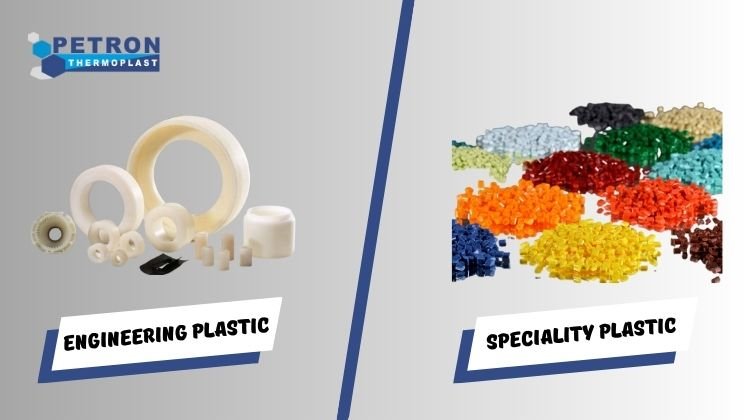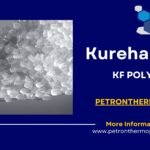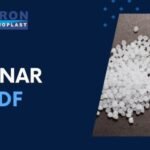Introduction
Difference Between Engineering Plastic and Speciality Plastic: In the world of plastics, there exists a diverse array of materials catering to various industries and applications. Two prominent categories are engineering plastics and specialty plastics. These materials offer unique properties and characteristics that make them suitable for specific use cases. Understanding the difference between engineering plastic and specialty plastic is crucial for selecting the right material for a particular project or application. In this blog, we will explore the dissimilarities between these two plastic types, delving into their compositions, properties, applications, and advantages.
What are Engineering Plastics?
Engineering plastics, also known as commodity plastics or performance plastics, are a group of thermoplastics that exhibit exceptional mechanical, thermal, and chemical properties. These plastics are designed to withstand higher stress levels and offer superior performance in comparison to standard plastics. Typically, they are used in demanding applications that require durability, dimensional stability, and resistance to various environmental factors.
Key Properties of Engineering Plastics:
1. Mechanical Strength:
Engineering plastics possess high mechanical strength, making them ideal for load-bearing applications. They can endure heavy loads without deformation or failure.
2. Temperature Resistance:
These plastics can withstand a wide range of temperatures, retaining their properties even in extreme heat or cold conditions.
3. Chemical Resistance:
Engineering plastics exhibit excellent resistance to various chemicals, making them suitable for applications involving exposure to corrosive substances.
4. Dimensional Stability:
Unlike standard plastics, engineering plastics have low levels of creep, ensuring their dimensional stability over extended periods.
5. Toughness:
They have superior toughness, which means they can absorb impact energy without breaking or cracking.
Common Engineering Plastics:
1. Polyamide (Nylon):
Nylon is a widely used engineering plastic known for its high tensile strength, toughness, and excellent wear resistance. It finds applications in automotive parts, gears, bearings, and various mechanical components.
2. Polycarbonate (PC):
Polycarbonate is renowned for its exceptional transparency, impact resistance, and thermal stability. It is utilized in eyewear, automotive windshields, and electronic components.
3. Polyoxymethylene (POM):
POM, commonly known as acetal or Delrin, is a low-friction engineering plastic frequently used in gears, bearings, and other precision mechanical components.
4. Polyethylene Terephthalate (PET):
PET is extensively used in the packaging industry due to its excellent barrier properties and strength. It is commonly found in beverage bottles, food containers, and synthetic fibers.
What are Specialty Plastics?
Specialty plastics, also referred to as high-performance plastics or engineering-grade plastics, are a distinct category of polymers designed to exhibit exceptional properties in specific applications. These plastics are tailored to meet the stringent requirements of industries such as aerospace, medical, electronics, and more. Unlike engineering plastics, specialty plastics are often used in niche applications where their unique characteristics are indispensable.
Key Properties of Specialty Plastics:
1. High Temperature Resistance:
Specialty plastics can withstand elevated temperatures without losing their mechanical integrity or dimensional stability.
2. Chemical Inertness:
They exhibit high resistance to aggressive chemicals, acids, and solvents.
3. Flame Retardancy:
Many specialty plastics are inherently flame retardant, making them suitable for applications requiring compliance with strict fire safety regulations.
4. Dielectric Properties:
Specialty plastics possess excellent electrical insulation properties, making them valuable in electronic and electrical applications.
5. Biocompatibility:
Certain specialty plastics are biocompatible, meaning they can be safely used in medical and healthcare applications.
Common Specialty Plastics:
1. Polyether Ether Ketone (PEEK):
PEEK is a high-performance thermoplastic renowned for its exceptional mechanical properties, temperature resistance, and chemical inertness. It is commonly used in aerospace, medical implants, and semiconductor applications.
2. Polytetrafluoroethylene (PTFE):
PTFE, also known as Teflon, is well-known for its non-stick properties, low friction, and resistance to chemicals. It finds applications in cookware, gaskets, seals, and bearings.
3. Polyetherimide (PEI):
PEI offers a unique combination of high strength, flame resistance, and excellent electrical properties. It is commonly used in electronic components, aerospace, and medical devices.
4. Polyimide (PI):
PI is widely used in high-temperature applications, such as aerospace components, due to its exceptional thermal stability and mechanical strength.
Applications and Advantages:
1. Applications of Engineering Plastics:
Engineering plastics find applications in various industries, including automotive, electronics, construction, consumer goods, and more. Their versatility and wide range of properties make them suitable for an extensive array of components and parts.
2. Advantages of Engineering Plastics:
The advantages of engineering plastics lie in their durability, mechanical strength, and chemical resistance. They offer cost-effective solutions for many industrial applications, reducing the need for metal components while providing excellent performance.
3. Applications of Specialty Plastics:
Specialty plastics cater to industries that demand exceptional performance under specific conditions. Aerospace, medical, and electronics industries heavily rely on specialty plastics for their unique properties.
4. Advantages of Specialty Plastics:
Specialty plastics offer unmatched performance in their niche applications, providing benefits such as high-temperature resistance, chemical inertness, and superior electrical properties. Their use in critical sectors ensures reliability and safety.
Key Difference Between Engineering Plastic and Speciality Plastic
Here’s a table highlighting the key difference between engineering plastic and specialty plastic:
| Difference | Engineering Plastic | Specialty Plastic |
|---|---|---|
| Properties | High mechanical strength | High-temperature resistance |
| Temperature resistance | Chemical inertness | |
| Chemical resistance | Flame retardancy | |
| Dimensional stability | Dielectric properties | |
| Toughness | Biocompatibility | |
| Common Applications | Automotive, electronics, | Aerospace, medical, |
| construction, consumer goods | electronics | |
| Advantages | Versatility, cost-effective | Exceptional performance in |
| solutions, wide range of | specific applications, | |
| properties | reliability, safety |
Conclusion
Difference Between Engineering Plastic and Speciality Plastic. In conclusion, the difference between engineering plastics and specialty plastics lies in their properties, applications, and the specific industries they cater to. Engineering plastics are known for their mechanical strength, temperature resistance, and chemical durability, making them ideal for a wide range of industrial applications. On the other hand, specialty plastics are designed to meet stringent requirements, offering exceptional performance in specific fields such as aerospace, medical, and electronics. Understanding the characteristics of these plastic types empowers engineers, designers, and manufacturers to make informed decisions when selecting the most appropriate material for their projects.
FAQ:
What is the difference between the two types of plastic?
Engineering plastics are designed for high-performance applications, offering mechanical strength, temperature resistance, and chemical durability. Specialty plastics cater to niche industries, providing exceptional properties like high temperature resistance, chemical inertness, and biocompatibility.
What are the 4 classification of plastic?
The four classifications of plastic are thermoplastics, thermosetting plastics, elastomers, and bioplastics.
What is an example of engineering plastic?
An example of engineering plastic is Polyamide (Nylon). It is known for its high tensile strength, toughness, and wear resistance, making it suitable for automotive parts, gears, bearings, and mechanical components.
How many types of engineering plastic are there?
There are several types of engineering plastics, including polyamide (nylon), polycarbonate (PC), polyoxymethylene (POM), and polyethylene terephthalate (PET), among others.









